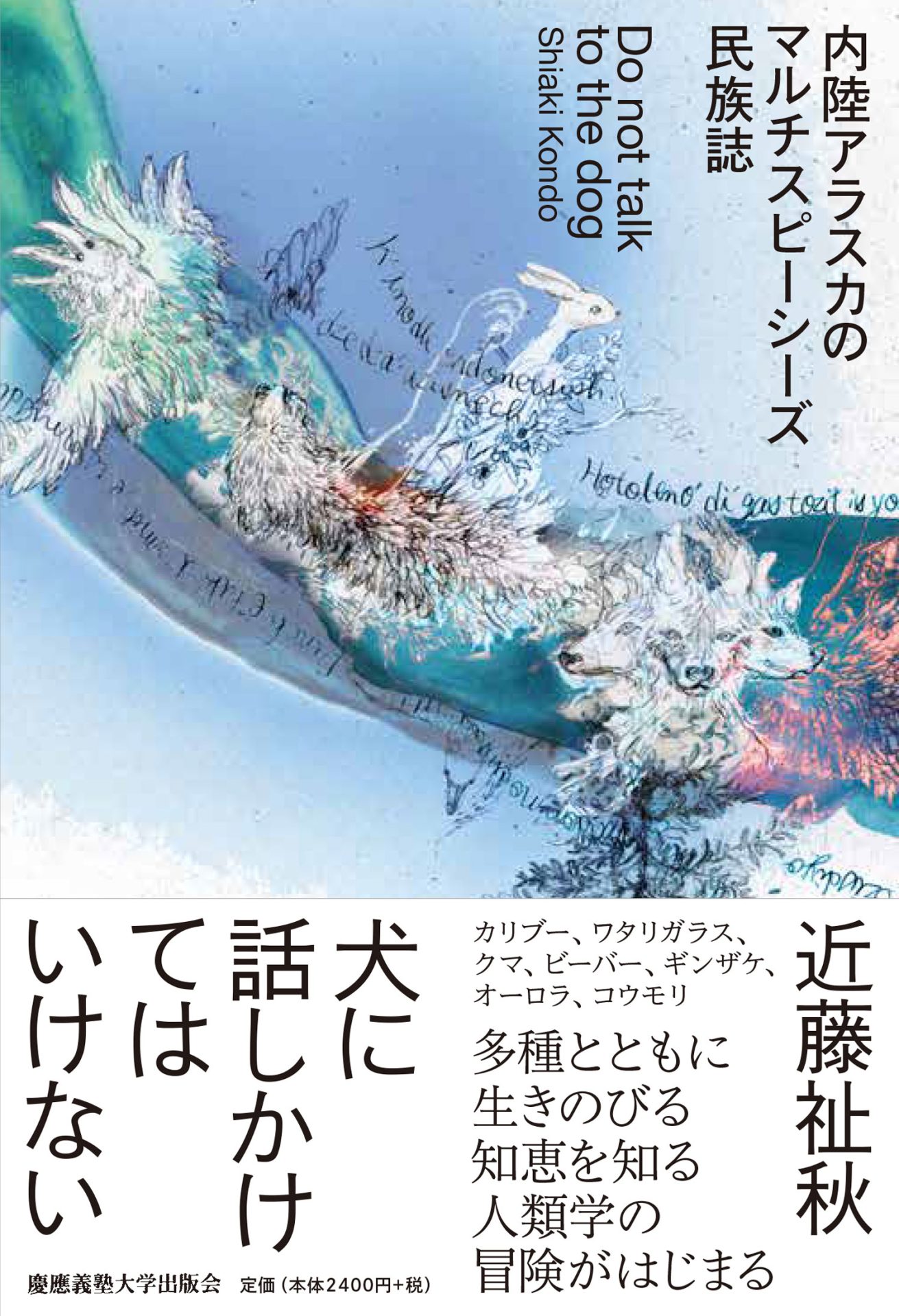
Publishing | 10.16.2022
Don't Talk to Dogs
A Multispecies Ethnography of Inland Alaska
Published: October 20, 2022
Book Information
Don’t Talk to Dogs
An Ethnography of Multispecies in Interior Alaska
Written by Shiaki Kondo
Book design = “Impregnated by a River” by Maki Ohkojima
Book binding = Shinichiro Okura
Publisher: Keio University Press
46″ size / lined paper / 240 pages
Date of first publication: 2022/10/20
ISBN: 978-4-7664-2845-2
(4-7664-2845-5)
C code: C0039
List price: 2,640 yen (2,400 yen)
本の内容
Caribou, Raven, Bear, Beaver, Gizzard, Aurora Borealis ……
Discover the wisdom of surviving with many species
An Anthropological Adventure Begins
In interior Alaska, there used to be a taboo against talking to dogs.
This book describes the relationship between Alaska Native people and their “natural environment” through fieldwork from the perspectives of multi-species ethnography and environmental humanities.
Inland Alaska Native peoples have lived in breathtaking relationships with plants, animals, spirits, and the land. At a time when “human” is being reexamined, this book reconsiders “coexistence with nature” based on their wisdom of “not being too in touch.
The book is illustrated by Maki Ohkojima’s “Impregnated by the River”.
Table of contents
Introduction–From a Day in the Field
Chapter 1: Welcome to Multispecies Ethnography
The Road to Modern Anthropology
The Birth of Multispecies Ethnography
The Anthropocene and Environmental Anthropology: In the Context of Multispecies Ethnography
Chapter 2: The Road to Nikolai Village
Nikolai Village
The Beginning of Fieldwork
Main characters in this book
Individualistic people?
Apprenticeship in Fieldwork
The physicality of fieldwork
Chapter 3: The Raven’s Eating of Wild Animals: Considering a Mythological Motif
The Raven as a Trickster
How does the myth work well for child rearing?
Dog Slaughter and the Raven Myth
Is it possible that the dog slaughter motif came from other regions?
Can the Raven’s dog-eating be explained by animal behavior?
Can the Raven’s preference for dog meat be considered a rhetorical strategy?
Myths about Multiple Causes
Chapter 4: Don’t Talk to Dogs: The Distance between Human Beings and Animals
From the Narrative of a Taboo
Transportation, Escort, and Hunting
Acceptance of Dog Sledding and Changes in the Early 20th Century
Dog Sledding Today
The Dog-Human Habitus
Chapter 5: Creating Rivers with Beavers: “Taking Many Species Seriously
The Beaver Controversy
Multispecies Ethnography in Dialogue with Ecology and Biology
The Beaver’s Relationship with the Dichinanik People
Beaver Dams and Gingko Salmon
Beyond the dichotomy between beaver advocates and opponents
Thinking with Keystone Species
The Goals of Multi-species Ethnography
Chapter 6: Living with “Remnant Birds”: Domus Sharing and Domestication
Thinking from the periphery of domestication
Bird Feeding, Protection, and Breeding
Living with “leftover birds
Domes Sharing with wild birds
Domus Sharing and Domestication
Chapter 7: Blue Flame in the Caribou’s Hair──About the Dene’s Synecdochal Body
The Northern Athabascan Body
Co-dimorphic body and social body
Cyborg Indians
Caribou People and the Northern Lights
Giant Animals and the Superego
The co-different body of warmth
Chapter 8: Bats’ Relatives: Considering “Communion” from Environmental Literature and Anthropology
From Devil to Role Model
Communion as an Objective and Practical “Communion
Conversation and non-conversation with creatures
The Wisdom of “Not Overly Sympathetic
Conclusion: What is the Wisdom of the Inland Alaska Natives?
The Range of Multispecies Ethnography
Outline of Chapters
Wisdom of Alaska Natives
Exploring the Third Way
Afterword
Notes
List of First Publications
List of illustrations
List of animal names
List of references
Index